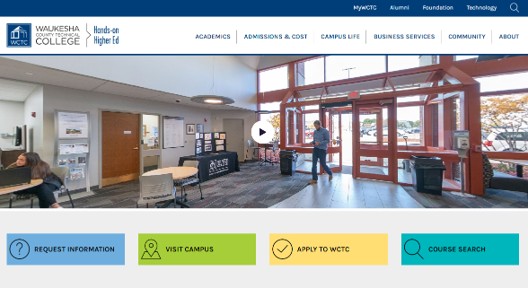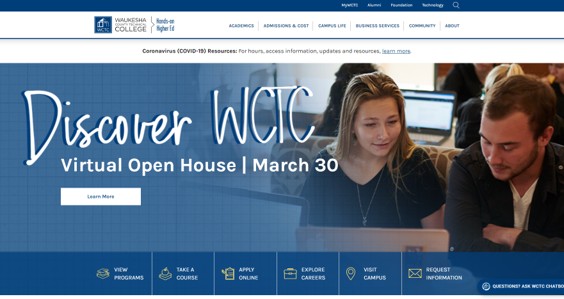Updated: July 28, 2025
Originally Published: July 15, 2024
In the ever-evolving digital landscape, user experience (UX) is increasingly recognized as a crucial practice in enhancing user satisfaction and business success.
Here’s a look at what UX is, its value, and how it’s evolved to help companies meet customer needs and improve their digital presence – and become a necessity instead of a nicety.
Understanding the Role and Impact of UX in Website Effectiveness
UX is the comprehensive interaction users have with a website that defines their experience in terms of effectiveness and efficiency. In other words, can a user easily and effortlessly do what they need to on your site?
In an era where having a website is standard, differentiation lies in a site’s efficacy and user-friendliness.
Websites are no longer just about having an online presence but about creating an experience that allows users to fulfill their needs smoothly and efficiently. Businesses that offer a seamless user experience online are the ones that will ultimately be successful in the long run.
And the role of UX is pivotal.
UX ensures that websites are not only visually appealing but also functional, catering to user needs in a straightforward and accessible way. Statistics indicate a significant increase in user satisfaction and site effectiveness when UX principles are applied meticulously. A website designed with user experience at the forefront is more likely to engage visitors, encourage longer interaction times, and lead to more return visits.
Positive user experiences also translate directly into higher conversion rates and enhanced brand loyalty.
The strategic implementation of UX requires a deep understanding of user behaviors, needs, and preferences, which is crucial for developing solutions that are not only practical but also resonate with users.
The Synergy of UX Research and Design in Project Implementation
So how does UX improve the user experience? Through both effective research and data-driven design.
The roles of UX research and UX design complement each other to enhance overall website usability. Initially, extensive data is collected through various methods of user research, including user interviews and focus groups, analytics, and usability testing. This data is then meticulously analyzed to understand user behaviors, preferences, and pain points.
The insights gained from user research are crucial as they inform the design process, ensuring that a website or other digital channel is not only aesthetically pleasing but also functionally optimal for the user.
This isn’t just relevant for major website changes. Small design changes driven by UX research can have a major impact on the way users interact with a website.
Take this website for the Waukesha County Technical College. The WCTC team wanted their site to do a better job of driving users from the home page to the program listing page. We confirmed through research that, when users arrived on the website via the home page, they often visited several other intermediary pages before arriving on the program listing page, despite this being possible in just a single click.
Before Redesign

Before the WCTC website redesign, 6.16% of users went directly to the Program Listing page from the home page.
During the redesign, we used the design of the site to assist in this goal. We changed the key calls-to-action listed below the heading of the home page to better highlight the needs of users visiting the site. The very first button was a direct link to the program listing page.
After several months, about 23% of users to the site clicked the View Programs button after visiting the home page. Previously, about 5% of users clicked the equivalent option in the previous design.
Research demonstrated that this was an issue for users visiting the website. This goal was implemented into the overall design of the page. And finally, research again confirmed that this approach was successful. It's critical that both UX research and UX design work together to create an effective digital solution.
After Redesign

Several months after the website redesign, 22.67% of WCTC's website visitors went directly to the Program Listing page from the home page.
Read more about the role UX research plays in guiding content design to improve UX.
Continuous UX Efforts vs. One-Time UX Projects
One-time UX projects often align with major site overhauls, such as website redesigns, where a substantial amount of data is gathered to inform significant changes. These projects, while efficient for an organization’s immediate needs, may not cater to evolving user requirements or technological advancements in the long term.
That’s where ongoing UX comes in. Ongoing UX efforts are characterized by continuous adaptations and refinements based on user interactions and feedback, ensuring the user experience remains dynamic and effective. Regular updates and testing create a consistently effective user interface, which continuously responds to changing user behaviors and preferences.
Websites that implement continuous UX strategies enjoy significantly higher engagement and satisfaction rates, underscoring the necessity of regular enhancements. And ongoing UX efforts facilitate a proactive approach to potential issues, allowing for timely resolutions that enhance overall user satisfaction.
Balancing Pleasing Design with Usability
When it comes to user experience design, balancing aesthetic website design with functionality can be a challenge. Especially when a website has a significant amount of complex data and third-party integrations.
Despite the pursuit of visually appealing designs, functionality can’t be compromised – 38% of users will stop engaging with a website if the layout is unattractive or hard to navigate.
To address these challenges, companies must depend heavily on data-informed design decisions. By leveraging analytics and user feedback, design effectiveness is continuously evaluated, ensuring that both visual appeal and usability are optimized.
For instance, when complex data systems are integrated into UX design, it’s paramount that these elements do not hinder the user journey but instead enhance it. This balance is achieved through rigorous testing and iterative design processes, where user data play a pivotal role in guiding modifications.
The integration of third-party systems often requires a deep understanding of both the external system's capabilities and the user's needs. Here, UX designers and developers work collaboratively to ensure seamless integration that maintains system performance and user satisfaction.
The complexity of such integrations is managed through a structured approach where each phase of the design and integration process is guided by specific user data, which informs how best to incorporate these systems without detracting from the overall user experience.
The Evolving Landscape of User Experience in Business
With companies’ growing understanding of UX’s direct impact on user satisfaction and business outcomes, there’s been a growing demand for UX services, ensuring that website enhancements align with optimal user experiences.
Through continuous improvement and adaptation to user feedback and behavior patterns, businesses can maintain relevance and gain competitive advantage in the digital realm.
User-centric design is not only preferable but is now truly fundamental for business success and longevity.
Ready to find out how UX can help your business? Get started with a complimentary UX consultation.





